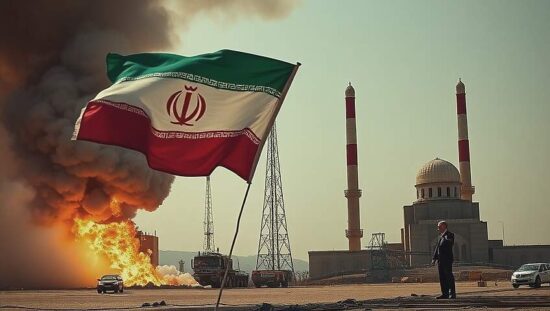The recent deployment of B-2 bombers, the only US aircraft capable of carrying the strongest bunker-busting bombs, in range of Iran is a clear message to Tehran about what could happen with its nuclear program if there is no agreement on its containment. Up to six B-2 bombers were stationed on a military base on an island in the Indian Ocean in March. The US Air Force only has 20 B-2 bombers, which are usually sparingly used. According to experts, the B-2 bombers, equipped with stealth technology and capable of transporting the heaviest US bombs and nuclear weapons, are in an ideal position for deployment in the Middle East. However, military and nuclear experts believe that even with such massive firepower, a US-Israeli military action would likely only temporarily halt a program that the West fears is already aimed at producing atomic bombs, despite Iran’s denial. Furthermore, an attack could prompt Iran to expel UN nuclear inspectors from the country and fully underground its nuclear facilities, accelerating its path to becoming an atomic weapons state. Without a regime change or occupation, it is difficult to imagine how a military strike could stop Iran’s path to nuclear weapons, says Justin Bronk, a senior research fellow for air power and technology at the Royal United Services Institute, a British defense thinktank. “It would essentially be about reintroducing a certain level of military deterrence, incurring costs and bringing the breakout time back to where it was a few years ago.” The breakout time refers to how long it would take Iran to produce enough fissile material for a bomb, currently taking days or weeks. The production of a bomb, if Tehran decides to proceed, would take longer. The Iranian nuclear program is spread across many sites and an attack would likely need to target most or all of them. However, the International Atomic Energy Agency, the UN nuclear watchdog, does not know where Iran stores important equipment, such as parts for centrifuges used in uranium enrichment. While Israel could likely destroy many of these facilities on its own, it would be a risky endeavor with repeated attacks and would have to contend with the Russian-supplied anti-aircraft systems, despite Western media reports claiming their destruction in Israeli attacks on Iran last year. The US, with its most powerful bunker-buster, the 14,000 kg Massive Ordnance Penetrator, which can only be fired from B-2 bombers and is not available to Israel, would be better equipped to destroy two underground Iranian nuclear facilities, Fordo and Natanz. While the facilities can be destroyed, the advanced knowledge the Iranians have gained about uranium enrichment would not be halted. Preventing its rebuilding would be a constant, extremely difficult task, according to analysts and officials. “What happens the day after? Iran will react to the attacks on its nuclear program by strengthening its facilities and expanding its program” says Kelsey Davenport of the Arms Control Association. “If you bomb Iran, I think Tehran will definitely expel the international inspectors and move towards the bomb” says James Acton of the Carnegie Endowment for International Peace.





